It is essential that our revolutionary solidarity extend beyond borders and transcend the artificial East/West divide. The Belarusian anarchist and anti-fascist milieu, with its dozens of political prisoners (and likely more unknown to local support efforts) is in dire need of international solidarity.
This new interview with an anonymous member of the Anarchist Black Cross Belarus not only details the repression of the state but delves into the history and different social contexts of anarchist practice in Belarus, as well as how they are situated relative to the broader region.
Hi, can you introduce yourself and what projects you’re affiliated with?
Hi, I am representing ABC-Belarus here, but I am also part of other anarchist projects including a collective that was created by Belarusian anarchists in exile in other European countries.
We have heard there is intense repression and sentencing of anarchists related to their participation in the post-election demonstrations of 2020. How were anarchists involved in these protests?
The initial conditions for the anarchist movement were as follows: we couldn’t compete with the big fish in the political field, we prioritized anonymity over public representation, we couldn’t change the mind of people who were mostly into the representative democracy fight, we had a lot of repression before and were cautious about participating in some things because we would be the first to be arrested if we took responsibility for it, we didn’t have much experience in working and organizing people, we were too inert to react fast to the speedy development of the uprising.
At the same time, we were a recognizable and loved political group (though no-one really knew shit about anarchism, people generally thought anarchists were cool). We had a history of horizontal organizing and fighting repression, digital and direct action security skills, ability to produce analysis and spread it as we had access to printing devices.
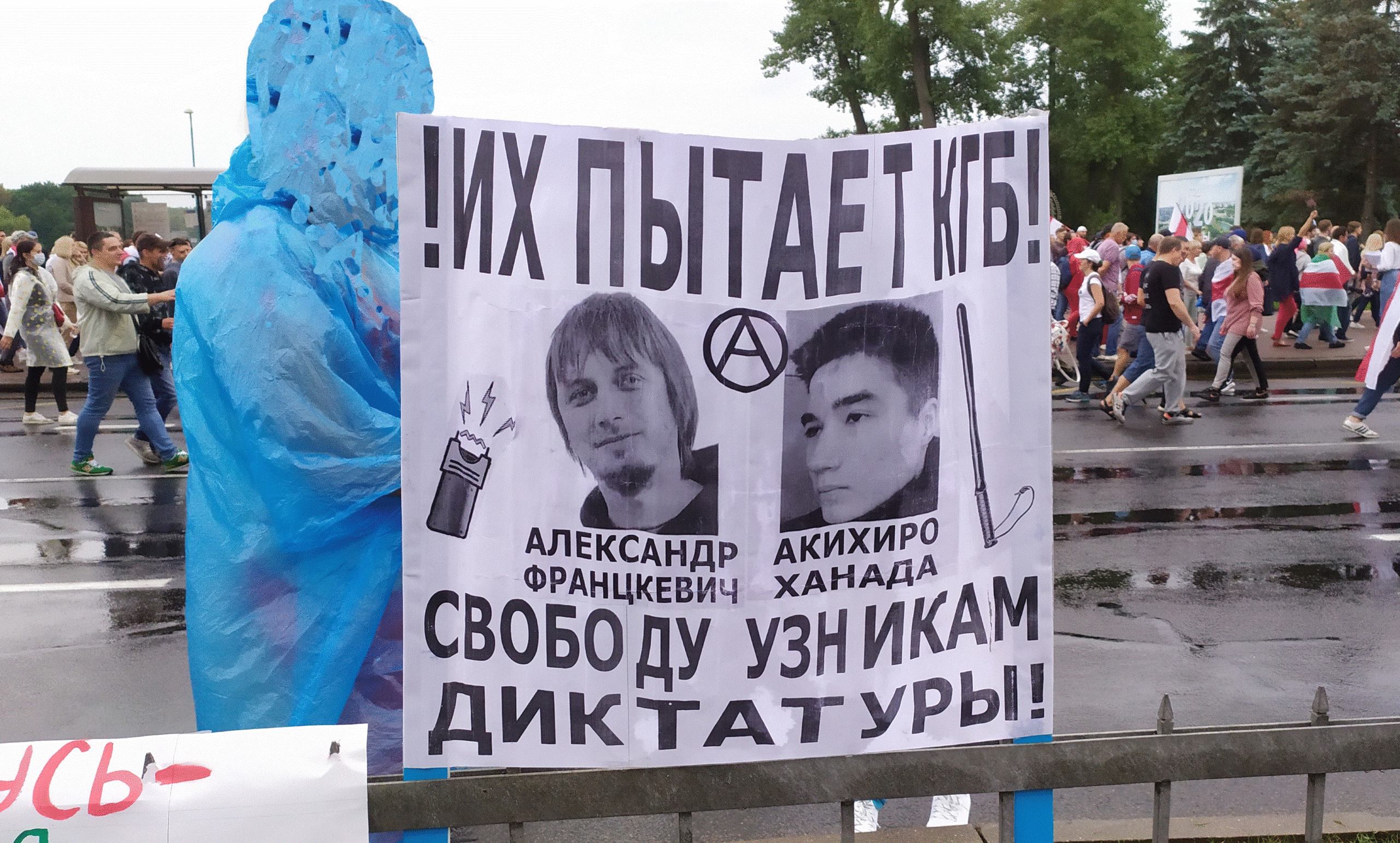
At a 2020 rally in Minsk, a poster urging solidarity with anarchist political prisoners.
So we tried to employ these advantages and mostly focused on having an anarchist representation at most protests, offering resources to people, producing radical and critical content, describing actions and methods people could easily copy-paste, sharing info on self-organization and self-government among the neighborhood assemblies, and fighting vehemently against the liberal division between peaceful and violent actions.
Different anarchist groups and individuals were doing everything from blogging and analysis of the protests to direct actions against state and cops’ property to participating in marches and spreading leaflets to trying to organize local neighborhood assemblies. That is why you can see various anarchists arrested and charged in different cases.
The fact that cops needed to target groups one by one meant some groups had more time to act just because they were lower on the cops’ priority list. Most anarchists I know stayed in the country as long as possible until they were arrested; some had a chance to flee from the country just before the crackdown.
Has the persecution since 2020 had a serious effect on the movement?
It should be noted that anarchists in Belarus were not a massive movement even before the 2020 protests. It was however a movement that was always specifically persecuted by the political police, which led to the development of a good security culture and making it not so easy to catch activists who wanted to remain out of cops’ sight.
The movement was also fragmented by previous splits and antagonisms based on the methods different groups saw as the most effective. That was an obstacle to a common mobilization of anarchists but also prevented cops from crashing the whole movement by targeting one group.
For the moment, there are no anarchist groups in the country that operate offline. The last one to stop activity after 15 years was the Minsk chapter of Food not Bombs. There is also some cooperation of the Belarusian state with Russian and Ukrainian law enforcement, who are helping to catch wanted activists in Russia or try to deport anarchists from Ukraine or prevent them entering.
Did the events of 2020 trigger a broader campaign of repression by the Belarusian state?
At the moment, it looks like cops just have a revenge on all activists and their methods including torture, public humiliation (like forcing people to repent on camera), harassing and arresting relatives if they can’t catch you, taking protesters’ kids to orphanages and registering your family as an “at-risk family.”
At the moment, we know of some 30 anarchists and antifascists who were criminally persecuted and we receive reports of people claiming to be anarchists in prisons among those who chose direct action as their method of action. This is comparable to 30 journalists who are in jail, and anarchists are probably the biggest repressed group with a political identity.
At the moment, anti-repression projects list about 1700 people who are known as post-protest prisoners. This number is not correct as many people are afraid and don’t report to human right defenders about their prosecution. By the way, human rights groups first were reluctant to recognize “violent” protesters as political prisoners, but after an anarchist campaign on recognizing all, they changed their approach.
Prior to the protests of 2020, were anarchists a significant target of the Belarusian state?
As I mentioned, anarchists were targeted by the state starting in 2010. You might have heard about a big crackdown on anarchists following some direct actions. The movement had to restructure and became more underground with time. Public activity was possible without labeling it as anarchist.
Before 2020, anarchists were targeted almost exclusively for direct action or arrested preventively if they were known as influential figures in the movement. Because of such harassment, even though it didn’t necessarily lead to criminal prosecutions, some activists still left the country as they were unable to function properly and hold a stable job without being arrested any time cops chose.
In 2020, just like all other protesters, anarchists were targeted for anything from a comment insulting a cop or president to just being on the roadway during protests to destroying property to being part of an “extremist organization” (which means all anarchist organizations now).
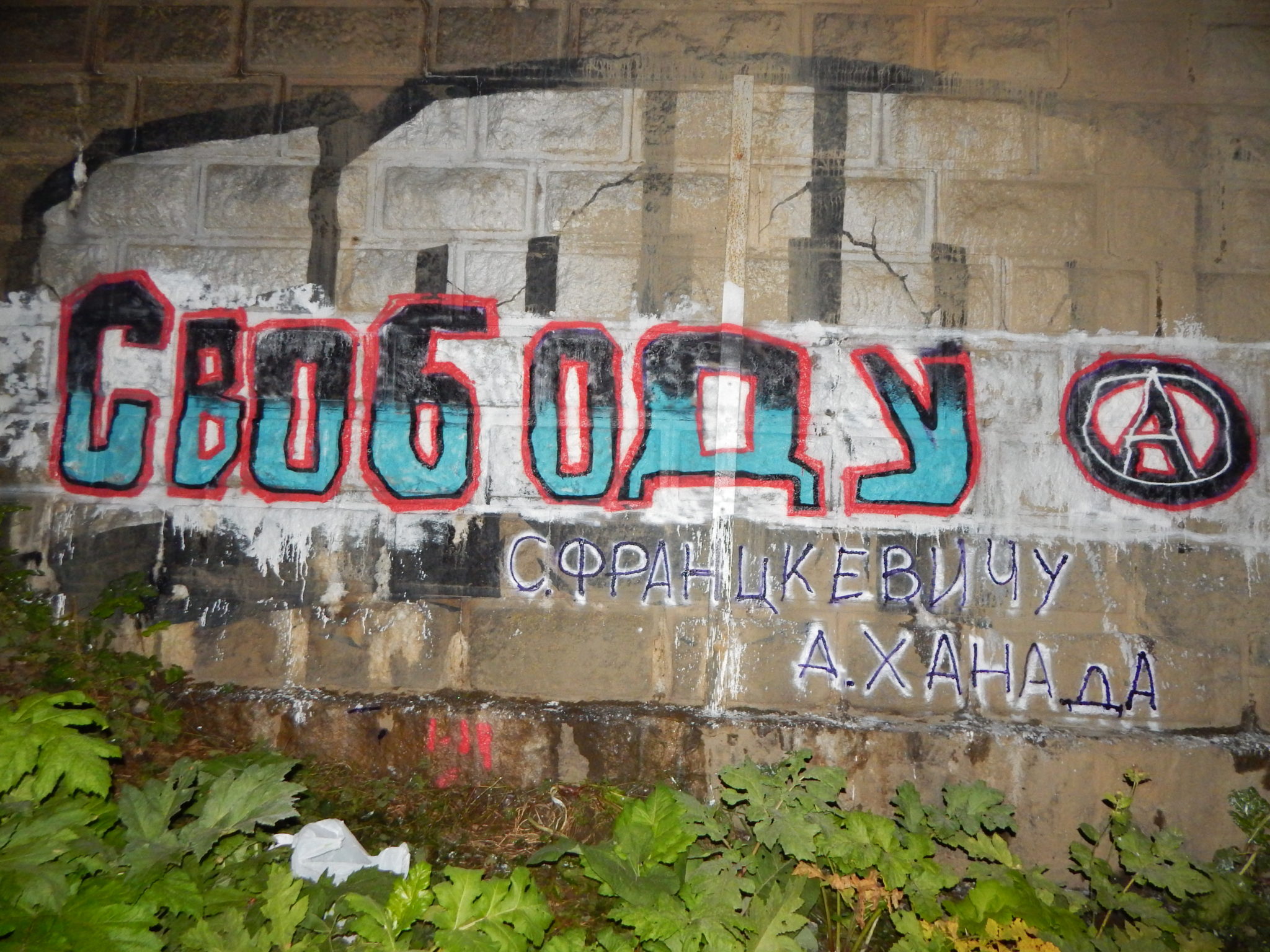
Graffiti denouncing the torture of imprisoned activists.
Are there specific cases of repression happening now you would like to call attention to? Are there ways to find out more on the cases and experiences of anarchists in Belarus who have been targeted by the state?
ABC-Belarus produces an overview of repression on a monthly and yearly basis. Most cases we have will be described in our yearly overview that is being translated now. See the abc-belarus.org website.
The three biggest cases worth mentioning are the case of the anarcho-partisans, the case of the international anarchist organization and the Pramen case.
In the first one, four insurrectionary anarchists got 18 to 20 years in prison for burning some cars and law-enforcement buildings last autumn.
The “international anarchist organization” is a frame-up by cops who collected actions of the Revolutionary Action anarchist group over the last ten years and made them a criminal organization with chapters in Russia and Ukraine. There are 10 defendants; some are charged with 10 crimes with the punishment ranging from 5 to 20 years.
The Pramen case includes four anarchists who are accused of participating in marches and spreading leaflets and having banners with a link to the Pramen media collective. Pramen has recently been designated an extremist organization, and the law makes anyone who shares its posts or references Pramen a part of the organization. The defendants face up to 6 years in prison.
What are some of the ways anarchist groups continue today in Belarus, and support those in prison or facing prison?
As I mentioned, mostly anarchist groups have disbanded. ABC-Belarus provides continuous financial and information support to repressed anarchists and antifascists, while the Pramen media collective reports and presents analysis of the unfolding political situation. A group of Belarusian anarchists in exile is active in Warsaw (Poland) and continue to raise awareness and do educational work in the Belarusian diaspora.
In many countries the term “terrorism” has been weaponized against anarchists in order to fabricate cases based on little to no evidence and increase punishment guidelines. Has this been done in Belarus?
As you could see from the description of the three cases, the cops indeed moved from charging people with regular crimes like property disruption or “disruption of public order.” They started using anti-extremist law to target anarchists, but also anyone who has strong presence online. The authorities not only legally banned all independent press, but also declared their websites and social media as extremist formations, forcing people to unfollow pages. In the case of the anarcho-partisans, terrorist charges were used for property destruction which increased the punishment twofold.
This is also the situation with 30 other prisoners who are accused of terrorism for popping a prosecutor’s car tire or similar personal attacks on the defenders of the regime.
2016: anarchists drop a banner reading “The Authorities are Robbing the People”
Beyond state repression, Eastern Europe is well known for a violent and intense fascist movement. In Belarus and the broader post-Soviet region, have anarchists been met with attacks and violence from grassroots fascists or neo-nazi movements?
Eastern Europe is a big region : )
Indeed, there was an increase of nazi organizations in different parts of it in last years, however certain parts of Eastern Europe never got any strong nazi/fascist movement. In Belarus, for example, a strong antifascist movement started at the end of the 90s and managed to keep the local fascist scene under control. At some point around 2005-2006, the conflicts moved to the football subculture, removing fascists almost completely from political organizing. The core of anti-fascist organizing in Belarus for a really long time was anarchist and anarcho-punk. The so-called authoritarian left had no problems with Lukashenko‘s pseudo-socialist dictatorship.
We know that from time to time the state was recruiting some top neo-nazis to attempt to organize provocations against anarchists or liberals. Some nazi groups in the ’90s were attacking opposition. In 2007 there was a huge fight between anarchists and nazis at the demonstration against social service cuts. A KGB puppet organization organized a block of football hooligans to join and attack us at the march. This organization didn’t exist before the march, nor did it ever come up again in following years. However, the nazi attack was used by the regime’s propaganda to show how opposition can not deal with each other. All of this was really nothing compared to what was happening at that point in Russia where our comrades were killed and a trip to Moscow was considered a risk.
It is also important to point here that the collapse of the Eastern Bloc opened doors to nazis all around the region. One of the reasons was lack of interest in the real problems of street fascism in most communist countries. Racist and nazi subcultures were mostly ignored or tolerated. The level of xenophobia in Soviet Union was very high, despite the fact that the country had quite a lot of different ethnic groups.
All of this frustration with the failed state poured onto the streets with some horrible examples. I believe for quite some time the fascists in Russia were the most violent of all with people being constantly murdered. This is also the reason why the Russian anti-fascist movement was so brutal and we have so many dead comrades. However, even that movement is now in decline, as Putin gave up his attempt to control neo-nazis in the country and started just repressing those who are not accepting his rule.
Talking about right now there are several fascist strongholds in Eastern Europe: Poland, Ukraine, Hungary. In those countries, anarchists are under constant threat of violence from the street nazis.
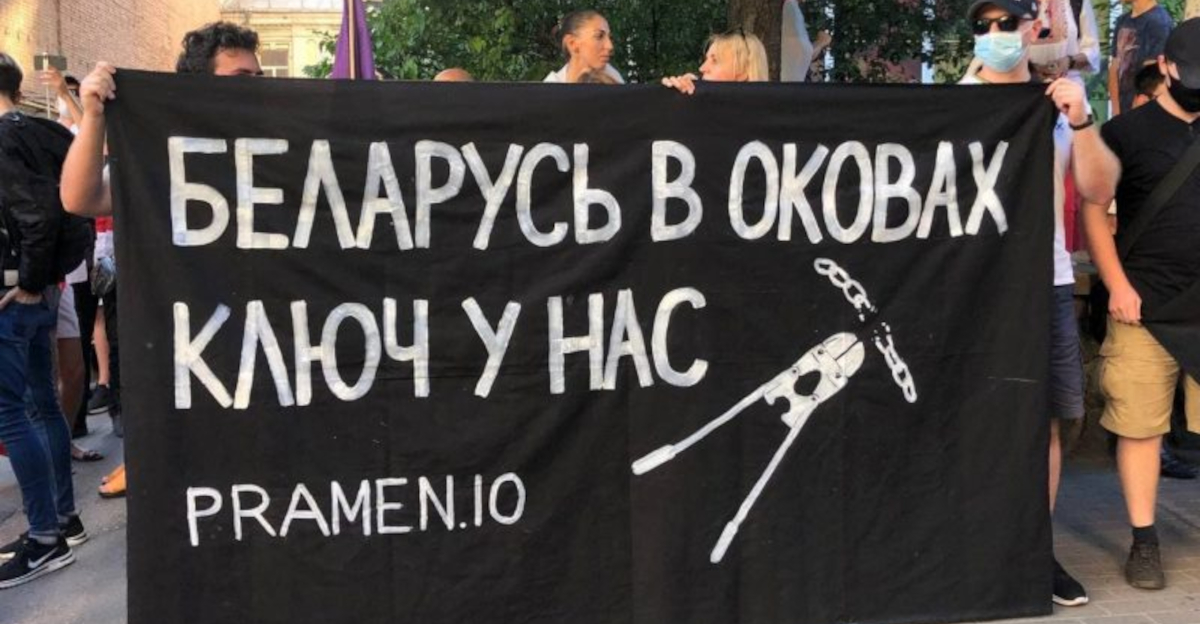
While football hooliganism has its obvious flaws, has it contributed to the broadening of participants in the anarchist and anti-fascist movements in Belarus? We ask this only because many prisoners seem to come from football club backgrounds.
In the 2000s, Belarus had one of the biggest anti-fascist football hooligan clubs in Eastern Europe. It was called MTZ-RIPO. The hooligan scene of the club had an incredible support, which was self-identified as anti-fascist. Some anarchists were involved in forming up and developing the club as the core of the Belarus anti-fascist movement, migrating away from punk antifa. For quite some time this development was very positive for the political atmosphere in the country: we would have local fascists occupied with their fight with MTZ, completely abandoning the streets to anarchists and liberals.
However, with the first wave of repressions and some comrades ending up in prison, political consciousness of MTZ fans was dropping, and many supporting of the club would be anti-fascist but also patriotic: still fighting with hooligans from the fascist Dynamo club, but drifting far away from anarchist politics. Right now, the antifa movement is quite far away from anarchism and way closer to some liberal anti-dictatorship.
The hooligan culture on one hand did manage to keep fascists busy and cause them problems, but on the other hand we had for a while a dynamic where people would abandon political struggle in favor of football subculture, which is a bit simpler, maybe a bit more violent, but doesn’t require big changes in yourself as well. So it was a really mixed thing. The hooligan subculture itself is not very anti-authoritarian, with some hard verticality of power based on the rule of the strongest.
In 2015-2016 the regime in Belarus decided to smash leftovers of the politicized hooligan scene. This was done due to fear of Maidan in Ukraine, where the hooligans played quite an important role. Repression was quite successful at smashing everything. What we have right now is some people still interested in going to different countries to join some games, but organized antifa clubs do not exist anymore.
Is there a specifically Belarusian anarchist tradition or example that you draw strength from?
Unfortunately, no. Anarchists were quite strong in the territory of what is now Belarus before the Russian Revolution but were exterminated by Bolsheviks a few years after the revolution. The tradition was broken for 70 or so years until the first anarchist groups started to appear after the collapse of the USSR. However, the generation that I represent didn’t have much connections to the older activists because most of them stopped being active before the new anarchist groups appeared in 2006-08.
It is generally very common for activists to stay in the movement for a few years and drift apart as they can’t achieve results or do public organizing and are constantly exposed to repression.
Mikola Dziadok was working on a new book covering 2002-2010, but was convicted and imprisoned again.
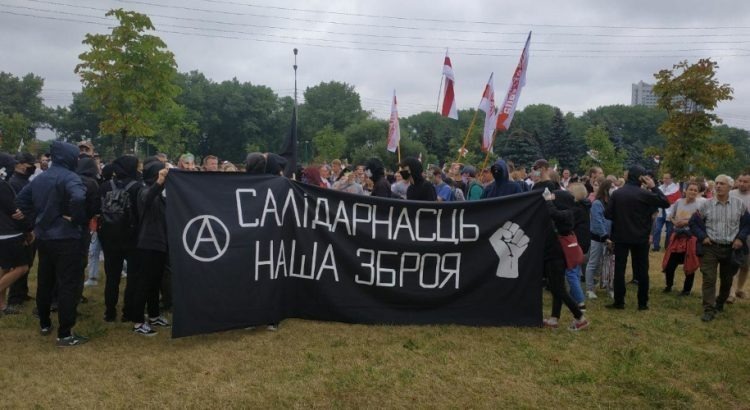
The banner reads: “Solidarity is our weapon.”
Are there ways to keep up-to-date on the cases of anarchists in Belarus facing repression? Are there also helpful resources for staying up to date with the movement in Belarus from abroad overall?
For the cases, you can follow abc-belarus.org and our Twitter. Pramen.io publishes English-language accounts on their website every now and then.
Are there ways to help and show solidarity from abroad? What are the best ways to demonstrate this?
For the moment, we need money more than anything. There are two trials underway with 14 defendants – that’s a lot of money. Some of them will probably be given huge fines from blocking traffic with marches. Donations can be made via an online fundraiser or directly on our website.
You can download and print a poster to put in local political spaces to remind people of Belarusian anarchists.
Two anarchists Mikola Dziadok and Ihar Alinevich wrote books based on their prison experiences in 2010-2015. Now they are in prison again. People can contact ABC-Belarus and ask for files to publish those books in the US and spread in the local movement.
Solidarity actions (including next to Belarusian embassies) are welcome, please send us reports and pictures, we will make sure the prisoners have a chance to see them.
But generally, just go on with your local fights, as the boat needs to be rocked around the world and we will feel the ripples.
Further Reading
For those interested in learning more, our interviewee recommended the following:
- A history of anarchism in Belarus from 1992-2002.
- An interview from August 2020 about anarchist participaton in the 2020 uprisings
- From June 2021, a zine providing a critical analysis of the 2020 revolt against the dictatorship
- From August 2021, a recording of a livestream analyzing protests and repression in Belarus
- An October 2021 radio interview with ABC-Belarus
- From November 2021, an article in a Slovakian publication: Invisible by politicians, hailed by the people: How anarchists became the new sexy in Belarus
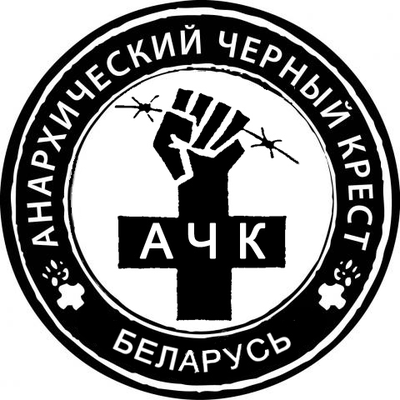
by IGD Worldwide via It's Going Down


No comments:
Post a Comment